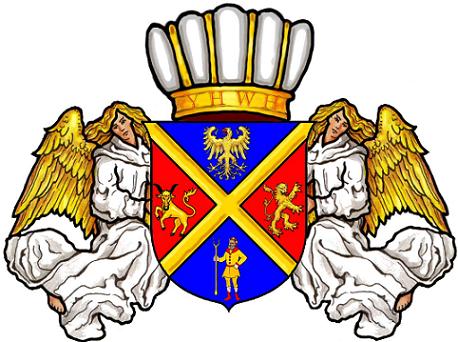
TCAWW Literature Bible Index

|
IMPORTANT: Easton's Bible Dictionary is NOT exegetical, and can be counter to the scriptural or Hebrew and Greek definitions of words.
150 Years ago you couldn't be a Pastor anywhere in the world unless you were fluent in Hebrew..... Even in the so-called "Dark Ages" everyone had a local Priest who could speak, read and write in at least 2 languages, who taught out of a Latin Bible. How far have we fallen in word definitions! DO YOU BELIEVE THE WORD OF GOD OR BELIEVE IN THE OPPOSITE? *******Recommended Materials for In-Depth Research of Scripture********* Strong's Exhaustive Concordance, Complete and Unabridged (Every pastor uses or recommends this for their congregation) It's the main tool every Christian should have in their library along with a good Lexicon to get full definitions. Beware, using just Strong's alone without a Lexicon will not give you full definitions of many words since it's not meant to do the function of a Lexicon. You will need some of the following books to render in-depth research beyond the scope of Strong's Concordance: (Most of which are included in several computer programs such as PC Study Bible and online at HERE for FREE ACCESS) 1. The New Englishman's Greek Concordance and Lexicon of the New Testament, by Wigram-Green *These two books by Wigram-Green are what Strong's concordance is based upon. Every word in the bible is listed by (the original Greek and Hebrew)Strongs# rather than by English translation. You cannot miss the bible's definition of a word with this tool. You can see how the original word is used every time throughout the bible. This research tool makes any user blow away most any pastor these days.* 2. The New Englishman's Hebrew Concordance of the Old Testament, by Wigram-Green 3. Greek-English Lexicon of the New Testament by Thayers 4. Hebrew-Chaldee Lexicon to the Old Testament by Gesenius 5. Interlinear Greek and English by Berry 6. Young's Analytical Concordance to the Bible 7. Vine's Expository Dictionary of Old and New Testament Words Keyed to Strong's Reference Numbers You can also order the KJV "Hebrew Greek Key Study bible" which has built-in lexicons and Strong's numbering within the actual text of King James, or if you prefer you can also get it in New American Standard. (we reccomend King James Version) We know you can always use the bible as it's own lexicon and use the word to interpret the word, however, but these are shortcuts for all who are wise to make quick use of. Thank You for using our online searchable Strong's concordance and dictionary. You can get all these books at ANY Bible bookstore and most major bookstores. Or order from us right now click here The first keys are finding what the bible's definition of a word is in scripture, not in 21st Century word definitions or MAJORITY Religious Doctrines in the broad path which leadeth to destruction. These tools help you see how the original word is used through the entire text of scripture, thus render the BIBLE'S Definition of a word since we live by Every Word and not by bread alone. Easton's (UnBiblical and sometimes FALSE) Bible Dictionary
|
Tebeth (Est 2:16), a word probably of Persian origin, denoting the cold time of the year; used by the later Jews as denoting the tenth month of the year. Assyrian tebituv, "rain."
Teil Tree (an old name for the lime-tree, the tilia), Isa 6:13, the terebinth, or turpentine-tree, the Pistacia terebinthus of botanists. The Hebrew word here used (elah) is rendered oak (q.v.) in Gen 35:4; Jdg 6:11, Jdg 6:19; Isa 1:29, etc. In Isa 61:3 it is rendered in the plural "trees;" Hos 4:13, "elm" (R.V., "terebinth"). Hos 4:13, "elm" (R.V., "terebinth"). In Sa1 17:2, Sa1 17:19 it is taken as a proper name, "Elah" (R.V. marg., "terebinth"). "The terebinth of Mamre, or its lineal successor, remained from the days of Abraham till the fourth century of the Christian era, and on its site Constantine erected a Christian church, the ruins of which still remain." This tree "is seldom seen in clumps or groves, never in forests, but stands isolated and weird-like in some bare ravine or on a hill-side where nothing else towers above the low brushwood" (Tristram).
Tekoa, Tekoah Pitching of tents; fastening down, a town of Judah, about 12 miles south of Jerusalem, and visible from the city. From this place Joab procured a "wise woman," who pretended to be in great affliction, and skillfully made her case known to David. Her address to the king was in the form of an apology, similar to that of Nathan (Sa2 12:1). The object of Joab was, by the intervention of this woman, to induce David to bring back Absalom to Jerusalem (Sa2 14:2, Sa2 14:4, Sa2 14:9). This was also the birth-place of the prophet Amos (Amo 1:1). It is now the village of Tekua, on the top of a hill among ruins, 5 miles south of Bethlehem, and close to Beth-haccerem ("Herod's mountain").
Tel-abib Hill of corn, a place on the river Chebar, the residence of Ezekiel (Eze 3:15). The site is unknown.
Telaim Young lambs, a place at which Saul gathered his army to fight against Amalek (Sa1 15:4); probably the same as Telem (2.).
Telassar Or Thelasar, (Isa 37:12; Kg2 19:12), a province in the south-east of Assyria, probably in Babylonia. Some have identified it with Tel Afer, a place in Mesopotamia, some 30 miles from Sinjar.
Telem Oppression. (1.) A porter of the temple in the time of Ezra (Ezr 10:24). (2.) A town in the southern border of Judah (Jos 15:24); probably the same as Telaim.
Tel-haresha Hill of the wood, a place in Babylon from which some captive Jews returned to Jerusalem (Ezr 2:59; Neh 7:61).
Tel-melah Hill of salt, a place in Babylon from which the Jews returned (id.).